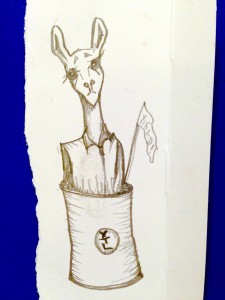To add weight to my final project, I thought I could investigate the folder in the drive that sits somewhat outside of our weekly reading criteria, it’s called Brettle_more stuff and it holds some pearlers from Kyla’s professional work.
Speaking of Music – Is Music a Universal Language? Is a piece produced for Radio National’s All in the Mind and it is hosted by Natasha Mitchell.
It begins with a montage of sounds and guests that will eventually play key sonic artefacts throughout the piece. The first time we hear the producer’s voice, it is delivered with an 8 bit low-fi sound quality, it is scratchy and purposefully dissonant when compared to the rest of the production. A reflexive and intriguing opener.
As the overarching topic is centred on sound and music, it would seem obvious that some cool glitchy zaps and buzzes would be employed so to gain our attention to say, “Hey! Listen people, I’m not from fucking Tron but I take this shit seriously!” The techno-hypno high is nicely juxtaposed with an aural parallel, a single flute overlaid with the switching of guest voices. You could argue that this whole sequence is counterpoint.
The array of esteemed guests was impressive, those included; neuroscientist Arnie Patel, psychologist Laura-Lee Balkwill, ethnomusicology Catherine Falk… but the biggest standout guest for me was Steven Pinker who wrote one of my favourite audio books entitled, The Stuff of Thought. Pinker, artfully addressed semantic fails and misfortunes of such as George Bush’s proclamation that Sadam was stashing those elusive weapons of mass destruction, the twin towers carnality debate AND, he got me thinking about the word sidereal which is one day (one rotation of the Earth) pertaining to a star other than our own.
Why I find this interesting is beyond me but, before I digress into geeked-ness, I just have to say that the audio piece Speaking of Music – Is Music a Universal Language? is an essential listen for anyone interested in aural cognition.

